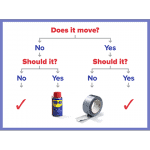
Reliability Centered Maintenance is a powerful tool that when applied and implemented correctly can provide numerous benefits including improved equipment reliability, a reduction in unplanned downtime and lower unit cost of product. One of the most impressive benefits of performing a RCM Blitz™ analysis is the identification of failure modes that could result in a health, safety and environmental incident or accident. While some would like to believe that in today’s world where most new designs and capital projects are subjected to numerous design reviews that would include process hazard analysis we still uncover a significant number of health, safety and environmental related failure modes in every RCM Blitz™ analysis. [Read more…]













 Ask a question or send along a comment.
Please login to view and use the contact form.
Ask a question or send along a comment.
Please login to view and use the contact form.